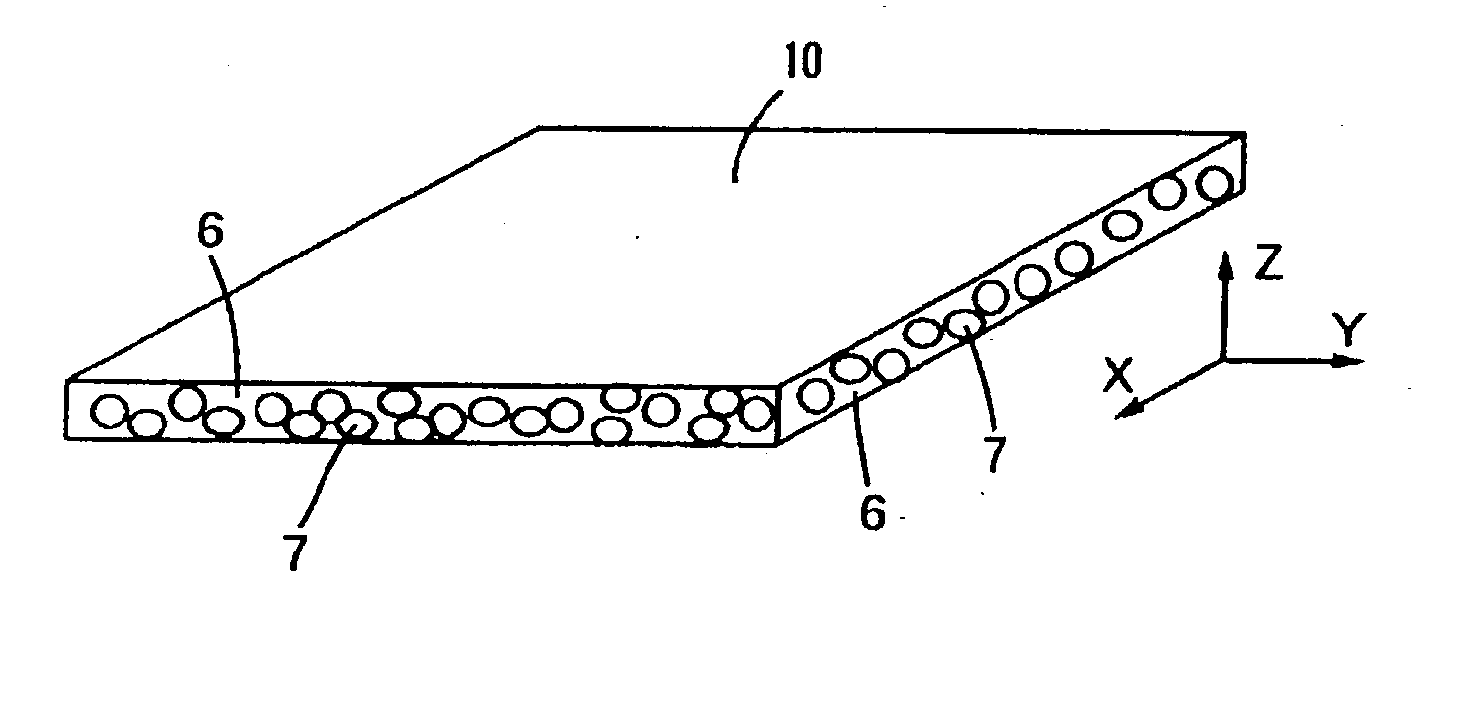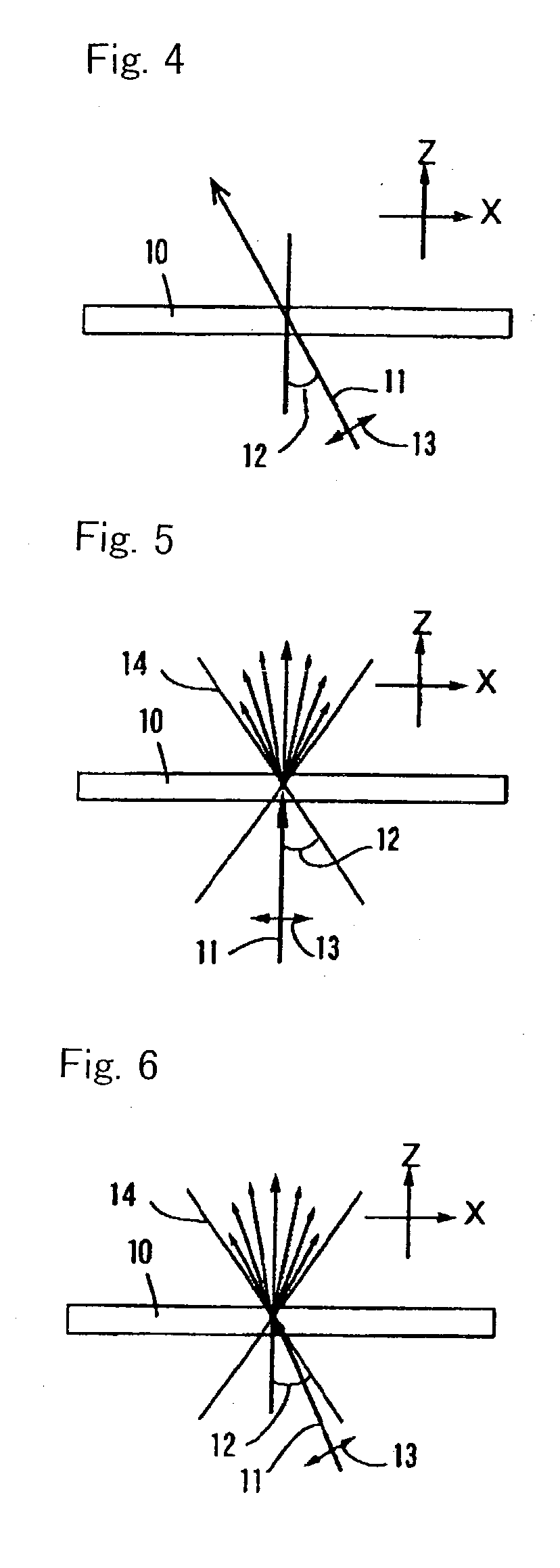Light-scattering film and liquid crystal device using the film
a liquid crystal device and light-scattering film technology, applied in the direction of instruments, polarising elements, optical elements, etc., can solve the problems of inability to enhance a light intensity (brightness) in a viewing direction of a viewer, no light-scattering film has such a property, and production costs are very expensive. , to achieve the effect of sufficient brightness, high directivity and lightening the display screen
- Summary
- Abstract
- Description
- Claims
- Application Information
AI Technical Summary
Benefits of technology
Problems solved by technology
Method used
Image
Examples
example 1
[0078] A commercially available acrylic liquid crystal compound (polymerizable acrylic liquid crystal) (100 parts by weight) and cyano-series liquid crystal compound (100 parts by weight) were mixed to prepare a liquid crystal mixture. The liquid crystal mixture showed a liquid crystal state at room temperature. The refraction index of the mixture was measured by means of an Abbe refraction index detector, and the birefringence index was 0.18 (ne=1.70, no=1.52). On the other hand, 200 parts by weight of SAN resin (a styrene-acrylonitrile copolymer, manufactured by Technopolymer Co, Ltd., 290ZF, refraction index=1.56) was dissolved in 800 parts by weight of cyclohexane, and to thus obtained solution was mixed the liquid mixture and 2 parts by weight of a polymerization initiator (a light-polymerization initiator). After mixing, thus obtained solution showed transparent isotropic phase. The solution was coated on a transparent conductive layer (ITO)-attached glass plate, and dried at ...
example 2
[0083] A light-scattering film 80 .mu.m thick was produced as the same manner as in Example 1. Incidentally, the sample stand 3 was rotated so that an oblique incident angle was 30.degree. on the film surface by using the apparatus shown in FIG. 1, then an irradiation of a polarized light was conducted and received, and a rectilinear transmittance at 30.degree. of an oblique incident light of the light-scattering film was measured as 10%.
[0084] Furthermore, each of the light-scattering films obtained from Example 2 and Comparative Example 1 was attached to the sample stand 3 by rotating the sample stand 3 at an oblique incident angle of 30.degree., then irradiating a linear polarized light, and receiving the light with rotating the arm 5, a scattering property relative to a scattering angle at an incident light of 30.degree. was determined. The results are shown in FIG. 9. Incidentally, in the Example, a scattering angle corresponding to a linearly transmitted direction is 30.degree...
PUM
| Property | Measurement | Unit |
|---|---|---|
| incident angle | aaaaa | aaaaa |
| transmittance | aaaaa | aaaaa |
| transmittance | aaaaa | aaaaa |
Abstract
Description
Claims
Application Information
 Login to View More
Login to View More - R&D
- Intellectual Property
- Life Sciences
- Materials
- Tech Scout
- Unparalleled Data Quality
- Higher Quality Content
- 60% Fewer Hallucinations
Browse by: Latest US Patents, China's latest patents, Technical Efficacy Thesaurus, Application Domain, Technology Topic, Popular Technical Reports.
© 2025 PatSnap. All rights reserved.Legal|Privacy policy|Modern Slavery Act Transparency Statement|Sitemap|About US| Contact US: help@patsnap.com



